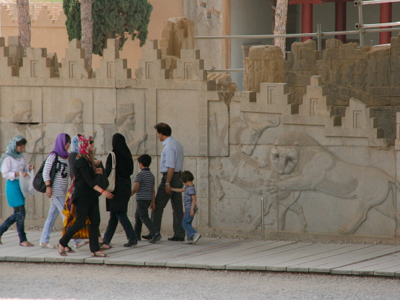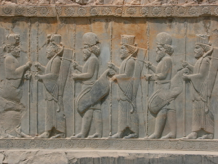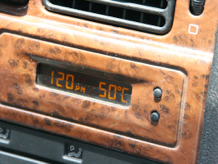North Africa ‘Plus’ Travel Diary

2011
Turkey Tunisia Algeria Iran Transnistria
I am writing today’s diary in our hotel room in Shiraz. I have just turned on the television, and the only local program showing is the 28th International Qu’ran Reading Competition, which Tim asked me innocently “is this a kind of local Eurovision contest”? The haunting notes of the Kyrgyzstani competitor are shaking the panes of the glass in our windows, which makes me wonder what impact they must having on my ear drums. Fortunately, I think my ear drums are probably more strongly constructed than our hotel windows. And judging by the massive 20-times life size stern looking portrait Ayatollah Khomeini to the left of the main stage, I am guessing the local team might be the favourites. And I wonder whether it is just coincidence that every competitor seems to be named Mohammed, or whether they have adopted stage names. Naturally, none of the competitors is a woman.
As I write this, the competitor from Sri Lanka has just started his performance, and is very wisely setting an example for the audience by presenting his recitation with his hands cupped over his own ears. The large audience of black chador-covered women seems to be nodding in approval, but the pained look on the face of the contestant from Egypt oozes competitive anxiety.
From the comments I have been hearing today, I suspect that Tim and I might be the only people in Shiraz watching these tortuous performances. I am yet to meet a committed Muslim in Iran, but I have met many who openly express their frustration with the wide between the ruling theocracy’s policies and the aspirations of the population as a whole. We have heard about the extensive frustration of the young women in having to wear the hijab, the widespread abandonment of Islam by most of the population (only 6% of Iranians now regularly attend the mosque, far less than in the Shah’s era before the 1979 Islamic revolution), and the subtle ways in which the masses protest against the theocratic rulings. As if to provide one example of this, we found that our main destination today, Persepolis, was very crowded with local Iranians who had chosen not to attend mosque even though this was Friday, the holy day of the Islamic week.
Akba had wanted us to leave the hotel at 7:30 am to start our drive to Persepolis, about 50 kilometres to the north-east from Shiraz. Both Tim and I really felt the need to catch up on sleep after our “almost-all-nighter” travelling on Wednesday - Thursday, so we agreed on a 9:30 am start instead. It was a good decision, and we felt reasonably well rested to begin our explorations.
(As I write this, the Iraqi contestant has just begin his recitation. Is the fact that he is dressed in an American style striped polo shirt a sign of protest, a sign of amateurism, or a set up to ensure certain defeat in the competition?).
Persepolis is one of the world’s great ruined cities, and probably the greatest testimony to the greatness of the first great ancient Persian empire. Persepolis dates from the later years of the Achaemenid empire that began in the 7th century BC and ended in 359 BC with the invasion of the Macedonian king Alexander the Great (Iranians omit the words “the Great”). Construction of Persepolis began in 518 BC during the reign of Darius I (the Great), and continued for about 150 years. Interestingly, the city was only inhabited for a few days each year during important religious ceremonies; the main capital was situated elsewhere.
Despite lying in ruins for over 2000 years, it was easy to appreciate the scale and grandeur of Persepolis in its heyday. The layout reflected Persian thinking but embraced workmanship and artistic input from all parts of the empire (stretching from Ethiopia through Turkey, Syria, Arabia, Turkmenistan, Pakistan and India). The carved stonework was very detailed and fine, and gave wonderful insights into the empire’s Zoroastrian religious focus, the extent and scale of the political influence, and through its ruined state, the emphatic nature of its demise.
We entered the city in the same way as ancient visitors would have entered, through the monumental Grand Stairway, through the still very impressive Xerxes’ Gateway, and along a straight avenue beside which trumpeters would have announced the arrival of the visitors. No, we didn’t get any trumpeters, although we did see some small fragments of the trumpets in the on-site museum - together with what I thought was perhaps the most compelling exhibit I have seen in a museum for many years, the remains of an ancient bronze-handled fly swat.
We received an extremely thorough explanation of Persepolis from Akba, during which he highlighted many of the very significant carvings and remains of buildings. We then spent an hour exploring the site ourselves, finishing towards the top of a nearby hill at the rock-hewn tombs of Artaxerxes II and Artaxerxes III which gave us a wonderful panorama of the enormous scale of Persepolis.
Back in North Africa, local people thought Tim must also be a local person as many started speaking Arabic to him. That hasn’t happened to him in Iran, where instead I find many people (always men, of course) have approached me speaking Farsi. I was told that my beard makes me look like a respected scholar, which is quite an achievement as I walk around wearing a “Costa Rica souvenir” hat with an embroidered toucan on the front.
Our time at Persepolis complete, we drove a short distance to a small roadside restaurant where we had a lovely lunch of kebab, rice and salad. It was lovely to enjoy the outdoor shade, especially as we emerged to find the outside temperature had reached 51 degrees (yes, Celsius).
We had two more stops to make before returning to Shiraz. The first was a small roadside collection of rock-carved murals known as Naqsh-e Rajab. The carvings, which graces what was then a roadside “café” for travelling caravans, showed scenes from the reigns of Ardashir I and Shapur the Great, and were essentially propaganda posters to promote the image of the rulers of the day.
The second stop was far more impressive. Known as Naqsh-e Rostam, it comprised a 30-metre high cliff into which four rock-hewn royal tombs had been carved in a style reminiscent of Petra in Jordan. The tombs are thought to have been for Darius II, Artaxerxes I, Darius I and Xerxes I, and each is thought to have taken about 26 years to excavate. Being Zoroastrians, the bodies were laid out in the open for the birds to clean the flesh from the bones, after which the bones were laid to rest in the cliffside tombs. The site was extremely impressive, especially as the huge scale became apparent when we walked closer and closer to the base of the cliffs.
Our final stop was perhaps the least impressive of the day, but still interesting. It was the inevitable carpet shop. As we sat through the display of carpets, we did find much to admire in the designs and the craftsmanship, and the tea that was served was very welcome indeed.
So... it has been a long day but an extremely stimulating and informative one.
Actually, it just seems long because the 28th International Qu’ran Reading Competition continues to drone into our room through the television set. Thought: maybe we could turn it off.

Day 19 - Persepolis, Iran
Friday
1 July 2011
Today’s Bonus Images


























